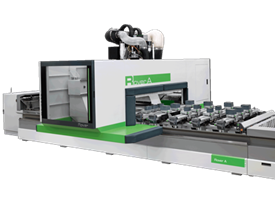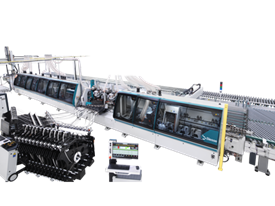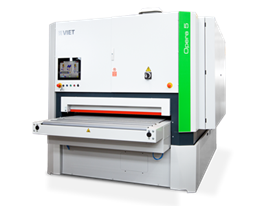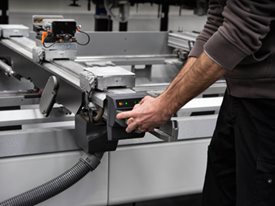Both professionals and DIYers may find wood sanding to be a laborious and time-consuming task. However, you must spend more time and effort on appropriate wood sanding if you want your woodworking projects to have a nice finish. The good news is that there are wonderful power tools out today to make your sanding tasks quick, simple, and enjoyable. Here is useful information on the top electric sanders for wood and when to use them, to assist you in overcoming any sanding difficulties.
What Can a Power Sander Do?
The first and the most basic question is how to sand wood with electric sander. To answer the question, it eliminates minor flaws in the wood, evens out lumpy or uneven surfaces, and makes the painting or staining the wood surface much easier. Hand sanders come in a variety of varieties, and each one has advantages. The tool shown is referred to as a mouse sander, and it is affordable! It will be held similarly to a computer mouse. It has a smaller tip to help you reach spots that may be difficult to access on your project.
For any wood project, hand-held sanders are quite affordable and useful. Even children using them under the supervision of an adult are safe.
When to use an electric wood sander machine
Woodworkers are aware that hand sanding has its proper applications. For small and complicated work where powered wood sanders can damage or obstruct sharp edges and fine details, you will often hand sand. There is no substitute for electric sanders for large sanding projects that move from rough to fine-finished phases. When it comes to effectiveness, they are the preferred power tools.
Nothing surpasses an electrically powered sander in many instances. Sanding by hand is only effective up to a point before utilising a power tool is more convenient and cost-effective than using your hands and several sheets of sandpaper. Here are some typical instances where using a power sander is the best option.
1) Making furniture
Whether you are a hobbyist or a skilled craftsperson, you need a variety of electric sanders. Given the wide range of uses, it is challenging to choose the best sander for furniture. You might profit from each form of the sander.
2) Making cabinets
Making furniture and making cabinets are two different things. Cabinetry typically refines to built-in and interlocking components, whereas furniture typically consists of multiple free-standing pieces. However, the sanding requirements are similar, so how to sand edges of wood? You'll probably utilise both belt sanders and sheet finishing sanders.
3) Building stairs
More than just a carpentry job, building stairs is more akin to an art. This talent necessitates a significant amount of sanding, where power sanders significantly improve speed and smoothness. Cordless random orbital sanders are indispensable in this situation.
4) Toy manufacturing
Powered sanders will make your job much simpler if you work as a craftsperson who makes children's toys. Unique tools, such as disc sanders, are needed for delicate operations like creating toys. With a palm sander, you might also spend a lot of time making toys.
How to sand wood with an electric sander machine?
According to the model and brand, every sander is unique. Make sure to thoroughly study your manual and check it for any minor discrepancies. All-electric sanders share the trait of requiring little effort from the user to operate them. While sanding, there is no need to push yourself too hard or exert yourself.
Sanding machines vibrate a lot when they are turned on, making wood easy to slide through as soon as you touch it down. As a result, the activity becomes self-propelled, which lessens the operator's workload.
Let the sander handle the majority of the work by gently moving it back and forth across the surface. It's that simple!
Features of Electric Wood Sander
Each sort of electric sander includes features that facilitate your work. They also increase the safety and fun of your sanding tasks. These engineered tools were carefully thought out and are the result of years of experience from product designers and woodworkers. The following are some characteristics to consider when purchasing an electric or cordless sander.
Hand grips
It's important to hold onto your sander in a secure and manageable way. Strong sanders vibrate a lot, whereas little sanders require careful management to protect delicate details. The composition is the most important part of sander grips. Soft grips make holding and controlling your sander considerably simpler.
Creating dust when it is necessary to sand when it cannot be avoided. However, there is a solution to avoid breathing in dust and sweeping it up. Dust capturing bags are frequently included with electric sanders. Some can work with external dust collection devices or shop vacs.
Electric sanders frequently include variable speed settings. They enable you to work cautiously initially at lower speeds or vigorously at high polishing speeds. Some sanders have throttle-like controls that let you change speeds while you sand. Others have selection switches with one to nine rate variations.
Trigger Locks
You can lock your sander in action with this practical function and free up your hands. Additionally, you can clamp your trigger so that it stays still as you feed your work onto the sanding belt, disc, or pad by locking it in the run position.
How to pick the proper sandpaper type and grit?
Sandpaper is the single most important component of your sanding procedure. Excellent results are produced by using sandpaper with the proper composition and grit. Good wood can be ruined by improper composition and roughness, especially at the wrong moment. After deciding which kind of sander is best for your particular task, choose the appropriate grit.
Start with a coarse grit when choosing sandpaper and work your way up to fine grit for the ultimate finish, which is the usual rule of thumb. But how well the wood is preserved and what kind of wood it is will vary. Typically, to quickly smooth off rough areas on raw wood, many artisans start with a coarse grit like 60. Then they advance in grit sizes, using a 100-grit for surfaces that are semi-smooth and a 150-grit for really smooth surfaces. Some people choose a final pass with 220-grit paper when they want an incredibly smooth appearance.
This was the basic guide on electric wood sander machines. Now that you have this guide, select the best option for yourself.



.png)





 Worldwide
Worldwide
 Italia
Italia
 United Kingdom
United Kingdom
 Россия
Россия
 France
France
 中国
中国
 Asia
Asia
 Deutschland
Deutschland
 España
España
 Schweiz
Schweiz
 North America
North America
 India
India
 Australia & New Zealand
Australia & New Zealand
 Türkiye Cumhuriyeti
Türkiye Cumhuriyeti
 Middle East
Middle East
 Brasil
Brasil